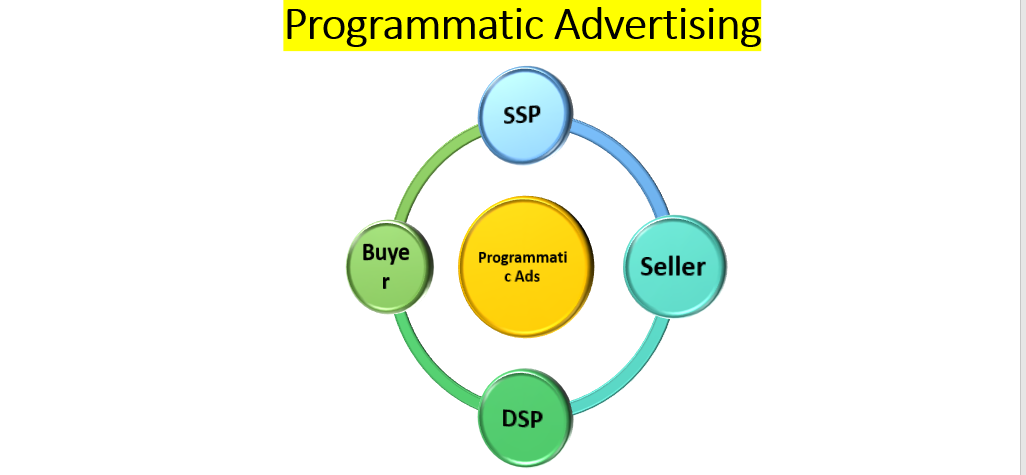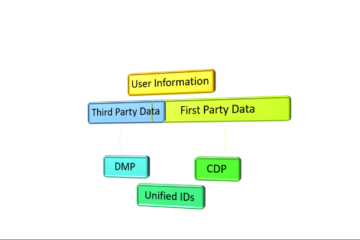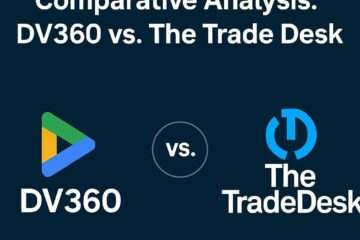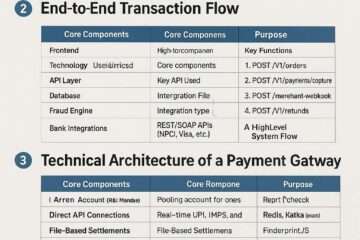

Significance of Display, Video, and Audio advertising in your Brand’s Digital Marketing Strategy
Could you please explain the significance of display, video, and audio advertising in your brand’s digital marketing strategy? Regardless of the nature of your offerings, digital advertising plays a crucial role in generating revenue and fostering user engagement.
Programmatic advertising is expected to play a significant role in driving advertising spend, as brands prioritize the use of programmatic ad buying to enhance the efficiency, reliability, and cost-effectiveness of their media campaigns.
Understanding programmatic buying/advertising can be challenging for marketers of all levels due to its complexity. Ensuring optimal ROAS from programmatic media campaigns can be quite challenging, even for those well-versed in programmatic advertising.
By implementing programmatic advertising best practices, you can position your brand for success and maximize the return on investment from your current programmatic media campaigns.
By adhering to industry standards for programmatic buying/advertising, you can develop reliable procedures for isolating and experimenting with various factors in your programmatic media strategy. By analyzing the impact of different messaging, creative, or audience segments on conversions, you can evaluate their effectiveness.
With the help of these valuable insights, you can make informed decisions about how to allocate your marketing budget. This will enable you to effectively utilize the time and resources of your programmatic buying/advertising team, ensuring that your campaigns yield the highest return on ad spend (ROAS). By implementing these strategies, you will experience improved efficiency in your programmatic media campaigns and have valuable insights to draw upon when creating future campaigns.
As a market research analyst, this blog will delve into the realm of programmatic advertising best practices. We will explore the effective utilization of audience targeting, integration with analytics data, frequency caps, overlap analysis, and outcome-based bidding. By implementing these strategies, you can enhance the efficiency of your programmatic media campaigns, reducing wastage and maximizing ROI for improved marketing effectiveness.
What exactly is Programmatic Advertising?
Now, let’s go over the concept of programmatic advertising and understand why it holds such significance for numerous brands in their digital advertising strategies.
Programmatic advertising involves the automated bidding process for purchasing ad space on a publisher’s website or app. Automated bidding takes into account the interactions between advertisers, publishers, and data providers, all in the blink of an eye as a website page loads, to enhance the efficiency of the media buying process. The advertiser who secures the winning bid will have the opportunity to showcase their ad in the designated space.
In the programmatic advertising environment, there are several programs that advertisers commonly use. These include DSPs like Google Display Network, Display and Video 360, the Trade Desk, Amazon Advertising, and Adobe Media Optimizer. With DSPs, advertisers can easily buy impressions from a wide range of publishers, targeting users based on factors like online behavior, demographics, and cookie data.
Advertisers have the ability to tailor ads to users based on various characteristics, including age, location, gender, and type of device. Crucially, they have the ability to showcase their advertisements to the appropriate target demographic, precisely when and where it matters.
Understanding the significance of programmatic advertising
Programmatic advertising offers a significant boost in efficiency when compared to the traditional method of manually purchasing ad space on a publisher’s website or app.
As an expert in the field, I can tell you that the conventional method of purchasing ad space can be quite time-consuming and costly. It typically involves manual negotiations, contracts, and even RFPs. It is evident that humans are inherently less dependable compared to the machine learning algorithms and AI utilized in programmatic advertising.
One key drawback of traditional media buying is its inability to accurately measure the real-time ROI of media campaigns. To accurately assess the effectiveness of your programmatic media campaigns, it is crucial to have real-time data on the return on investment. This data allows you to identify the specific ads and their elements (such as creative, copy, publisher, timing, and audience) that contributed the most to conversions.
Programmatic buying/advertising provides you with up-to-the-minute data on how your campaigns are performing. With the help of real-time insights, you can constantly improve your programmatic advertising campaigns by analyzing the results and optimizing them for maximum return on investment and return on ad spend.
By avoiding unsuccessful programmatic media campaigns, you can save your budget and invest it in top-performing ones instead.
Now that you have a basic understanding of programmatic buying/advertising and its significance to brands, let’s go over our suggested best practices. By following these guidelines, you can maximize your return on investment from programmatic media campaigns and enhance marketing efficiency.
1.Utilize audience targeting to effectively reach valuable audiences and eliminate non-performing audiences for more strategic media purchasing.
Understanding your audience is crucial for maximizing the effectiveness of your programmatic media campaigns and making the most of your media budget.
With programmatic media buying/advertising, you have the power to divide users into distinct audiences using predetermined criteria. By utilizing this approach, you can guarantee that your advertisements will only reach the most relevant audiences through your DSP (demand-side platform).
By carefully targeting your ads, you can avoid wasting money on audiences who have no interest in what you offer. This strategy increases the chances of your ads successfully converting users. Optimizing programmatic media campaigns can significantly improve the return on investment (ROI) of your overall programmatic advertising efforts.
For optimal audience targeting, it is crucial to ensure that your ads are tailored to your specific target audience, with highly-relevant content and customized creative and messaging.
One approach to achieve this is by utilizing data-driven or data-responsive creative. Using machine learning, this technology identifies the most effective ad variations for driving user conversions.
Customized advertisements typically yield a greater click-through rate, leading to an increase in conversions. Improving conversion rates is crucial for boosting your return on investment (ROI). This, in turn, allows you to demonstrate the effectiveness of your marketing efforts and make a strong case for allocating more funds towards programmatic advertising.
2. Integrate programmatic advertising data with analytics data to gain a comprehensive view of campaign performance across all channels.
By connecting your ads data with your analytics data, you can effectively optimize your audience targeting. Utilize your analytics data to gain insights on the users and audiences you should focus on, and determine the optimal timing to engage them at various touchpoints along their customer journey.
By strategically allocating your programmatic media budget, you can effectively target users at different stages of the conversion funnel with tailored ads. By excluding them from certain programmatic campaigns, you can ensure that they only see relevant ads. This way, you can avoid wasting media spend on showing them ads that are not relevant to their interests.
By connecting your ads and analytics data, you can establish a unified source of truth for measuring the overall efficiency of your marketing efforts. As an illustration, Google Analytics 360 seamlessly integrates with Google’s enterprise DSP (Display and Video 360) and other essential tools within the Google Marketing Platform. Consequently, this enables you to enhance your attribution models, providing a deeper understanding of the most impactful touchpoints and associated campaigns that warrant the highest allocation of budget.
Understanding the true value of your campaigns is crucial for effective budget allocation. By correctly attributing conversion credit, you can identify which campaigns drive conversions and avoid wasting budget on ineffective ones. Then, you can enhance the programmatic media campaigns to maximize the return on investment and strengthen other crucial touchpoints in the conversion funnel.
With this approach, you can effectively manage and optimize your cross-channel digital marketing, allowing for quicker adjustments and flexibility in your digital marketing strategy.
3. Implementing effective frequency caps to prevent repetitive ad exposure to users
With frequency caps, you have the power to manage the number of impressions that specific users receive, whether it’s on a monthly, weekly, or even hourly basis. Running efficient programmatic media campaigns involves a valuable strategy that allows you to identify and exclude duplicate ads for different users across channels. This is made possible through integration with your analytics platform.
Repeatedly displaying identical advertisements to users can be highly inefficient and counterproductive, resulting in a waste of programmatic media budget and potentially hindering user conversions. Typically, this occurs when individuals grow frustrated with the repetitive nature of your advertisements. When customers become frustrated with your ads, it can have a negative impact on how they perceive your brand and decrease the likelihood of them choosing your brand over competitors who consistently display fresh and relevant ads.
By implementing frequency capping, you can optimize the allocation of your programmatic media budget and redirect impressions from one user to another, resulting in more efficient use of resources. As an expert in marketing analysis, you can effectively manage the frequency of ad impressions by redirecting them to different users within your target audience once the designated limit has been reached.
By utilizing this strategy, your ad can reach a larger segment of your desired audience, resulting in increased exposure without the need for additional advertising expenses. Maximizing reach without increasing ad spend is crucial for achieving a higher return on ad spend (ROAS), which is a key indicator of marketing efficiency.
4. Ensure there is no repetition of ads to a specific user across various publishers by identifying commonalities among multiple DSPs and/or inventory sources.
Regardless of the DSP you choose for purchasing programmatic media, most of them access the same programmatic inventory. For instance, Display & Video 360 expands its inventory reach to more than 100 partner ad exchanges, along with unlimited audience targeting ad exchanges.
Accessing a large database of available impressions or audiences can be highly advantageous. On the other hand, it also puts you at the risk of squandering your media budget by displaying the same ads across various publishers without any particular purpose. By reallocating this wasted media budget, you can acquire additional valuable impressions to reach new audiences and users. To prevent this, it is important to ensure that you do not replicate campaign strategies or target audiences across any other DSPs that you may utilize alongside your primary DSP.
Running campaigns using the same tactics and audiences in multiple DSPs can lead to self-competition, potentially wasting your budget by driving up CPMs. Driving up CPMs unnecessarily can have a negative impact on the potential ROAS of your programmatic media campaigns, ultimately reducing the overall efficiency of your programmatic advertising.
Understanding your CPMs and assessing their suitability for your programmatic media campaign is crucial.
By analyzing the overall cost-effectiveness of your ads, you can make informed decisions about budget allocation. By analyzing CPM rates, you can effectively optimize your campaign settings to ensure the best return on investment within your allocated budget. Being able to make these kinds of adjustments is crucial for improving marketing efficiency, as it helps avoid wasting money on high CPMS that yield low ROI.
5. Utilize machine learning algorithms to optimize outcome-based bidding and reduce CPMs.
Google’s enterprise-level DSP, Display and Video 360, offers a significant advantage with its outcome-based bidding feature. This sets it apart from other DSPs in the market.
Outcome-based bidding utilizes automated bidding strategies that leverage Google’s ML (machine learning) algorithm. When bidding, the machine learning algorithm takes into account a range of factors such as device, location, language, and the dynamics of the auction. Automated bidding occurs on a CPM and PPC basis for campaigns utilizing target CPA or maximize conversion strategies.
PPC bidding offers a more cost-effective approach for advertisers, as they are only charged when a user clicks on their ad, rather than for every ad view. Due to lower PPC costs (CPMs less than $1), you can achieve a substantial campaign reach at a more affordable price. By utilizing this approach, you can effectively fine-tune your bidding strategy to optimize outcomes, resulting in potential cost savings through reduced overall CPMs.
In Summary
Programmatic advertising simplifies and streamlines the purchasing of programmatic display, video, and audio impressions. With this approach, you have more control over the placement and timing of your programmatic ads, allowing you to gain valuable insights from data and make informed decisions about your marketing budget allocation. Being well-informed about budget allocation can greatly improve your ROI from programmatic media campaigns, leading to increased marketing efficiency for your brand.


























































